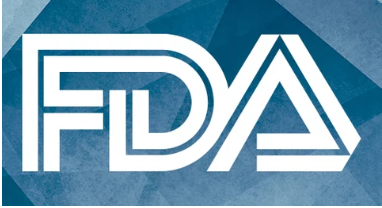FDA ODAC Votes 8-to-1 Against Applicability of Glofitamab DLBCL Data
The FDA’s ODAC convened to discuss the potentially inconsistent treatment effects of glofitamab between regional subgroups in the phase 3 STARGLO trial.
In December 2024, the FDA accepted a supplemental biologics license application for glofitamab as a treatment for those with transplant-ineligible relapsed/refractory DLBCL based on data from the STARGLO trial.

The FDA’s Oncology Drug Advisory Committee (ODAC) voted 8-to-1 against the applicability of the phase 3 STARGLO trial (NCT04408638) population and results to a proposed US patient indication for glofitamab-gxbm (Columvi) as a treatment for those with relapsed/refractory diffuse large B-cell lymphoma (DLBCL).1
In June 2023, the FDA granted accelerated approval to glofitamab as a treatment for those with relapsed/refractory DLBCL not otherwise specified or large B-cell lymphoma arising from follicular lymphoma following 2 or more prior lines of therapy.2 The STARGLO study was designated as a confirmatory trial intended to validate the anticipated benefit of glofitamab in patients with DLBCL and potentially convert the accelerated approval to full approval status.
According to a briefing document from the FDA, an assessment of efficacy data from STARGLO highlighted notable differences in overall survival (OS), progression-free survival (PFS), objective response rate (ORR), and complete response (CR) rate based on race and region; outcomes were largely driven by the trial’s Asian population.3 These gaps raised concerns regarding the robustness of the STARGLO trial data and whether they could be generalizable for a US-based patient population. The ODAC convened to vote on the applicability of the STARGLO findings to patients with relapsed/refractory DLBCL in the US, specifically.
In the STARGLO trial, 274 patients with relapsed/refractory DLBCL were randomly assigned 1:1 to receive glofitamab (n = 183) or rituximab (Rituxan; n = 91) in combination with gemcitabine and oxaliplatin. At the primary analysis of the trial, the median OS was not reached (95% CI, 13.8 months to not evaluable [NE]) in the glofitamab arm vs 9.0 months (95% CI, 7.3-14.4) in the rituximab arm (HR, 0.59; 95% CI, 0.40-0.89; P = .010706). With an additional follow-up of 11 months, an additional analysis revealed a median OS of 25.5 months (95% CI, 18.3-NE) vs 12.9 months (95% CI, 7.9-18.5) in each respective arm (HR, 0.62; 95% CI, 0.43-0.88).
Primary analysis results showed that, regarding PFS outcomes, the glofitamab combination reduced the risk of death or disease progression by 63% (HR, 0.37; 95% CI, 0.25-0.55; P <.000001). In each arm, the CR rate was 50.3% (95% CI, 42.8%-57.7%) vs 22.0% (95% CI, 14.0%-31.9%; P <.0001).
The trial included 161 patients in the Asia Pacific region, 88 in Europe, and 25 in North America. Of note, the briefing document highlighted imbalanced prognostic factors between the trial’s treatment arms among the patients in North America. Compared with the rituximab arm, more patients in the glofitamab arm had primary refractory disease (80.0% vs 40.0%), higher IPI scores (66.6% vs 50.0%), and more advanced stage disease (80.0% vs 66.7%).
“This imbalance underscores the difficulties with interpreting data from small subgroups, where the effectiveness of randomization in terms of balancing prognostic factors between treatment arms was essentially lost,” The authors of the briefing document wrote.3 “Consequently, in North America, the [glofitamab] arm includes a higher proportion of patients with poorer prognoses and higher likelihood of worse OS outcomes compared with [the rituximab arm], potentially independent of the treatment administered. The inherent challenges associated with exploratory analyses in small groups, such as reduced sample sizes and lack of statistical power, exacerbate uncertainties.”
Overall, the FDA observed differential treatment effects on outcomes such as OS, PFS, CR rate, and ORR across regional subgroups in the STARGLO trial. Additionally, inconsistencies in patient and disease-related factors included demographics, disease burden and histology, and treatment history. Other notable differences included those related to treatment exposure, concordance in response assessments, and timing of efficacy assessments.
In December 2024, the FDA accepted a supplemental biologics license application for glofitamab as a treatment for those with transplant-ineligible relapsed/refractory DLBCL based on data from the STARGLO trial.4
References
- May 20-21, 2025 meeting of the Oncologic Drugs Advisory Committee (ODAC) - day 1 FDA. Accessed May 20, 2025. https://tinyurl.com/28cema3t
- FDA approves Genentech’s Columvi, the first and only bispecific antibody with fixed-duration treatment for people with relapsed or refractory diffuse large B-cell lymphoma. News release. Genentech. June 15, 2023. Accessed May 20, 2025. https://bit.ly/3X7M5dr
- Oncologic Drugs Advisory Committee (ODAC) Meeting May 20, 2025. BLA 761309/Supplement 001. FDA. Accessed May 20, 2025. https://tinyurl.com/3mcx9yvx
- FDA accepts supplemental biologics license application for Roche’s Columvi combination for people with relapsed or refractory diffuse large B-cell lymphoma. News release. Roche. December 5, 2024. Accessed May 20, 2025. https://tinyurl.com/5edss86j
Highlighting Insights From the Marginal Zone Lymphoma Workshop
Clinicians outline the significance of the MZL Workshop, where a gathering of international experts in the field discussed updates in the disease state.